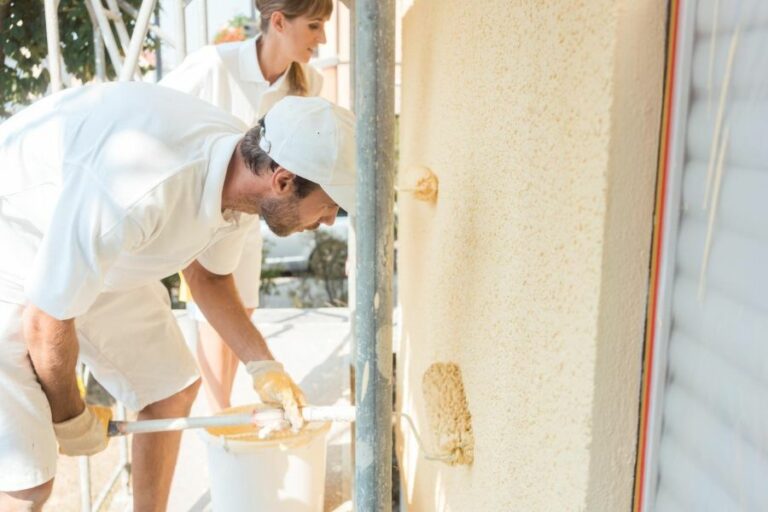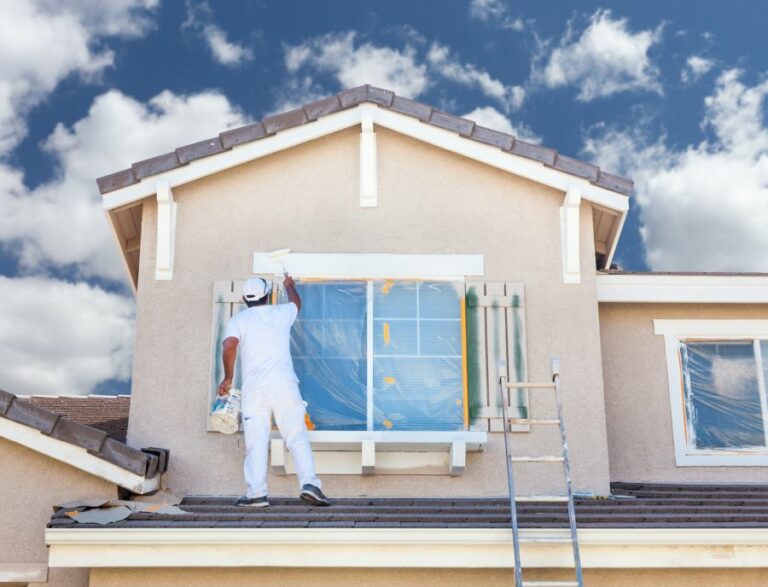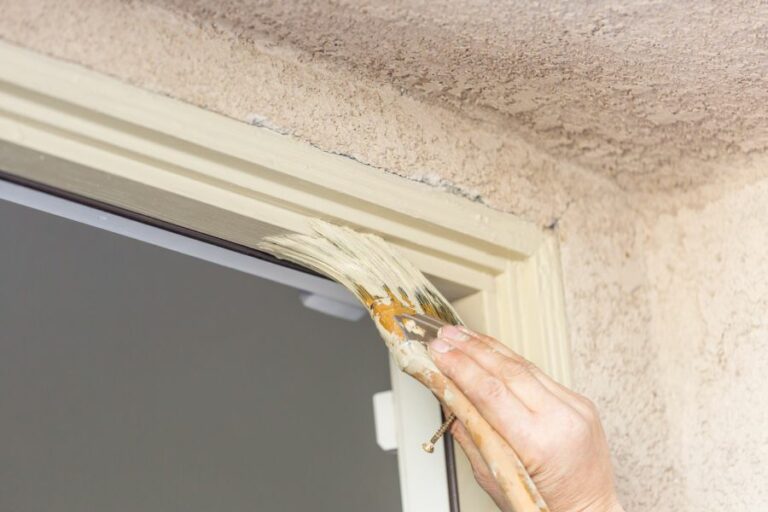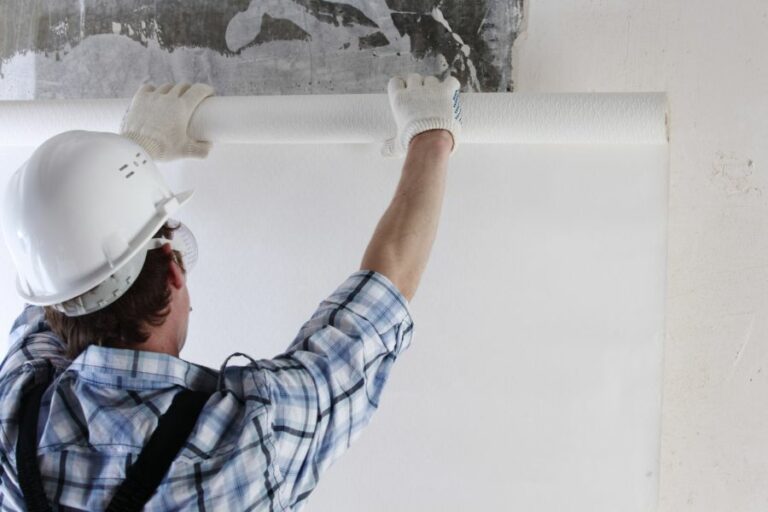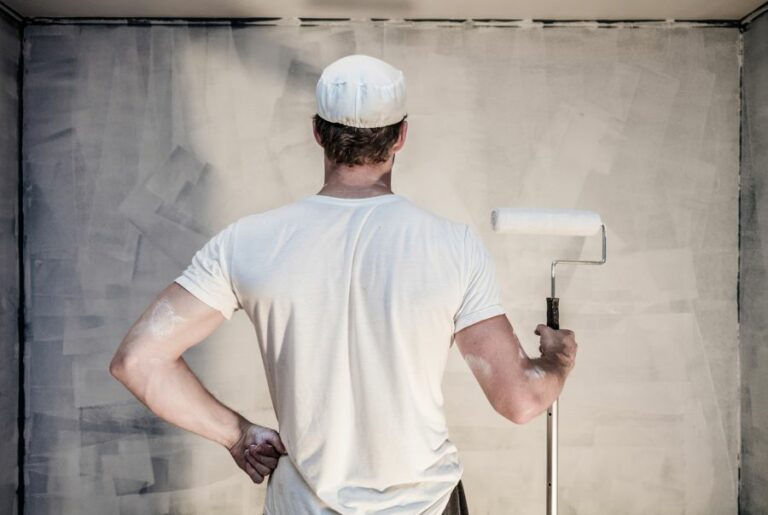Repairing And Filling Cracks, Holes, And Imperfections In Surfaces
Cracks, holes, and imperfections in various surfaces can be an eyesore, as well as a gateway for moisture and further deterioration. Repairing and filling these imperfections is crucial to maintaining a polished and aesthetically pleasing home or workspace. Luckily, you’ve come to the right place to learn how to tackle this problem effectively and achieve seamless results.
Repairing and filling cracks, holes, and imperfections in surfaces:
To repair and fill cracks, holes, and imperfections on various surfaces, identify the type of damage, clean the area, and apply an appropriate patching compound or spackling paste. For concrete surfaces, use concrete patching compounds, while for plaster and drywall, use joint compound or pre-mixed spackling paste. Sand and finish the repaired area for a smooth, even surface.

Tired of staring at unsightly cracks, holes, and imperfections on your walls, floors, or furniture? Our comprehensive guide will teach you the tricks of the trade to restore any surface to its former glory.
With step-by-step instructions and expert tips, you’ll be a master in no time! So don’t fret. Read on and make those imperfections disappear!
Contents
- 1 Mending Cracks, Holes, and Flaws on Various Surfaces
- 2 Identifying Materials for Fixing Surface Cracks and Holes
- 3 Top Solution for Filling Surface Cracks Effectively
- 4 Techniques for Filling Masonry Cracks: An Overview
- 5 Preparing Surfaces: Filling Holes and Cracks Prior to Painting
Mending Cracks, Holes, and Flaws on Various Surfaces
Maintaining a smooth and seamless surface is essential for both aesthetic and functional reasons. Regardless of the material, be it concrete, plaster, wood, or drywall, wear and tear and natural aging will eventually lead to cracks, holes, and other imperfections.
Properly addressing these issues will not only improve the appearance of the surface but also extend its lifespan. This guide will discuss various methods of repairing and filling cracks, holes, and imperfections in various surfaces.
• Identifying the Type of Damage
Before starting any repair, it’s important to understand the kind of damage sustained by the surface. Different materials and imperfections will require different repair methods and materials. In general, surface damage can be classified into three categories:
- Cracks: Thin, linear fractures in the material.
- Holes: Rounded or irregular voids in the material that go entirely through its thickness.
- Imperfections: Surface-level inconsistencies, such as chips, dents, or gouges that do not penetrate the material’s depth.
• Repairing and Filling Cracks
Cracks are a common issue and can appear due to various reasons like material shrinkage, ground movement, or temperature fluctuations. The key to a successful crack repair is to first clean the crack, removing any dirt, debris, or loose material that could interfere with the repair material.
– Concrete Surfaces
For repairing cracks in concrete surfaces, a high-quality concrete patching compound is recommended. Some popular choices include hydraulic cement, epoxy, and polyurethane sealants.
- Prepare the crack: Use a chisel and hammer to widen the crack slightly, ensuring it has a uniform depth and width and removing any loose material.
- Clean the crack: Remove any dust or debris using a wire brush, then flush the crack with water and let it dry.
- Apply the patching compound: Follow the manufacturer’s instructions for mixing and applying the chosen patching compound. Use a trowel or putty knife to press the compound into the crack, ensuring it is filled thoroughly.
- Allow the compound to cure: Refer to the manufacturer’s instructions for curing time. Once cured, sand or grind the surface to create a smooth, even finish.
– Plaster and Drywall Surfaces
For repairing cracks in plaster and drywall, a joint compound or pre-mixed spackling paste is recommended.
- Prepare the crack: Use a utility knife to remove any loose or damaged material around the crack.
- Clean the crack: Remove any dust or debris using a soft brush or vacuum.
- Apply the joint compound or spackling paste: Fill the crack with the compound using a putty knife, making sure the product fills the crack entirely.
- Sand and finish: Allow the compound to dry according to the manufacturer’s instructions, then sand the area to create a smooth, even surface. If necessary, prime and paint the repaired area.
• Repairing and Filling Holes
The process of repairing and filling holes is generally similar to repairing cracks. The main difference is that slightly different products and techniques will be needed to match the type of material.
– Concrete Surfaces
For concrete surfaces, consider using a concrete patching product, such as a pre-mixed concrete mix or hydraulic cement, or epoxy putty.
- Prepare the hole: Remove any loose or damaged material around the hole using a chisel and hammer.
- Clean the hole: Remove any dust or debris using a wire brush or vacuum, then rinse with water and let it dry.
- Apply the patching product: Follow the manufacturer’s instructions for mixing and applying the patching product. Use a trowel to press the product into the hole, ensuring it is entirely filled.
- Allow the product to cure: Refer to the manufacturer’s instructions for curing time, then sand or grind the surface to create a smooth and even finish.
– Plaster and Drywall Surfaces
For plaster and drywall surfaces, utilize a joint compound, pre-mixed spackling paste, or a patching and repair kit designed for the specific material.
- Prepare the hole: Trim away any loose or damaged material around the hole with a utility knife.
- Clean the hole: Remove any dust or debris using a soft brush or vacuum.
- Apply the joint compound or spackling paste: Fill the hole with the chosen compound using a putty knife, making sure the product fills the hole entirely.
- Sand and finish: After the compound has dried according to the manufacturer’s instructions, sand the area to create a smooth, even surface. If necessary, you can apply additional layers, ensuring each layer is dry and properly sanded before applying the next. Once complete, prime and paint the repaired area.
• Addressing Surface-Level Imperfections
Surface-level imperfections, such as chips, dents, or gouges, can be repaired similarly to cracks and holes. First, determine the best filling material based on the surface being repaired (e.g., wood putty, joint compound, epoxy, or a specialized filler).
Follow the manufacturer’s instructions for application, ensuring the product adequately fills the imperfection. Once it dries, sand the repaired area to create a smooth and even surface, then prime and paint if necessary.
• Additional Resources
For more information and guidance, consider visiting these trustworthy non-commercial sources:
- Family Handyman: Offers numerous articles and tutorials on a wide range of home repair and maintenance tasks.
- This Old House: Provides expert advice and step-by-step instructions for various repair projects, including dealing with surface imperfections.
- The Concrete Network: Offers useful information on repairing concrete surfaces, including cracks and holes.
In conclusion, repairing and filling cracks, holes, and imperfections in surfaces is an essential aspect of maintaining a structurally sound and visually appealing space.
By understanding the different types of damage and the appropriate repair methods and materials, you can confidently tackle these surface imperfections and keep your surroundings in top condition.
Step | Description |
|---|---|
1 | Identify the cracks, holes, and imperfections in the surface. |
2 | Clean the area around the damage by removing any loose debris, dirt, or dust. |
3 | Select the appropriate filler material for the type of surface and size of the damage (e.g. wood filler for wooden surfaces, plaster filler for walls). |
4 | Apply the filler material to the damaged area using a putty knife or other appropriate tool, making sure to press the filler firmly into the crack, hole, or imperfection. |
5 | Smooth the surface of the filler material so that it is level with the surrounding surface, removing any excess material. |
6 | Allow the filler material to dry according to the manufacturer’s instructions. |
7 | Once the filler material is dry, sand the repaired area smooth, ensuring that it blends seamlessly with the surrounding surface. |
8 | Apply primer to the repaired area, if necessary, to prepare it for paint or other finishing treatments. |
9 | Apply paint or other finishing treatments to the repaired area, blending it with the surrounding surface to create a seamless appearance. |
Identifying Materials for Fixing Surface Cracks and Holes
Maintaining the integrity and appearance of various surfaces, whether it’s in your home, office, or any other structure, is crucial for ensuring their durability and longevity.
One common method to keep surfaces in good shape is using materials to fill cracks and holes that eventually form over time.
• The Fundamentals: Types of Filling Materials
There are numerous materials available for filling cracks and holes depending on the type of surface, the extent of the damage, and the desired final appearance. Let’s break down some of the most commonly used materials:
– Caulk
Caulk is a versatile and generally inexpensive material that can be used for sealing joints and filling small cracks and gaps in various surfaces. It is typically applied using a caulking gun, which allows for smooth and precise application. Caulk comes in several different types, including:
- Acrylic latex caulk: This is a water-based caulk that is easy to work with and has a moderate level of flexibility. It can be easily painted over and is suitable for various surfaces such as wood, plaster, and masonry.
- Silicone caulk: This caulk is highly waterproof, flexible, and durable, making it ideal for use in areas exposed to moisture, such as bathrooms and kitchens. However, it usually cannot be painted over.
- Polyurethane caulk: This material offers excellent adhesion, flexibility, and durability, but it may require more effort to apply and clean up. It is suitable for use on a wide range of surfaces, including wood, metal, and masonry.
– Putty
Putty is a pliable, adhesive compound that is commonly used for filling holes, dents, and other irregularities in wood, plaster, and masonry surfaces. Some of the most popular types of putty include:
- Wood filler: This is a thick, paste-like compound that contains wood fibers or other similar materials. Wood filler is designed specifically for filling holes, gouges, and other imperfections in wooden surfaces and can be sanded, stained, and painted to match the surrounding wood.
- Spackling paste: This is a lightweight and easy-to-sand putty primarily used for repairs on drywall and plaster surfaces. It dries quickly and can be easily painted over, allowing for minimal disruption during repairs.
– Epoxy
Epoxy is a two-component resin system that provides excellent adhesion, strength, and durability when used as a filler material.
Available in various formulations, epoxy is commonly used to repair damaged concrete, masonry, metal, and some plastic surfaces. It is typically mixed just before use and comes in a variety of setting times, ranging from rapid curing to longer working times.
– Hydraulic Cement
Hydraulic cement is a type of high-strength cement that hardens rapidly when mixed with water, forming a water-resistant bond. It is particularly useful for repairing cracks and holes in concrete surfaces exposed to water, such as basements, swimming pools, and sewer pipes.
• Expert Recommendations for Filling Cracks and Holes
Based on personal experience, here are some expert recommendations for selecting and using filling materials:
- Choose the right material for the job: Consider the surface type, the extent of damage, and any specific requirements such as moisture resistance or paintability. For instance, while silicone caulk may be ideal for a bathroom repair, it might not be the best choice for filling gaps in a wooden door frame due to its lack of paintability.
- Preparation is key: Before applying any filler material, ensure the surface is clean, dry, and free from any loose debris. This will help create a strong bond between the filling material and the surface.
- Follow the manufacturer’s instructions: While general best practices can be applied across various materials, each product often has specific recommendations for a successful application, such as mixing ratios, drying times, and application techniques.
- Use the appropriate tools: Investing in good-quality tools, such as a caulking gun, putty knife, or trowel, will make the application process smoother and ultimately lead to more professional-looking results.
- Finish the repair properly: After the filler material has cured or dried, make sure to sand, paint, or stain the surface, as necessary, to create a seamless appearance.
For more in-depth information on repairing cracks and holes in different surfaces, the US Department of Energy provides useful resources on air sealing and other home repair techniques.
Top Solution for Filling Surface Cracks Effectively
Properly filling cracks is an essential skill for any homeowner or professional handyman. A well-finished repair job not only restores the appearance and functionality of the damaged surface but also helps prevent further damage by sealing out moisture and other contaminants.
The key to achieving a successful repair lies in choosing the right material and using the right techniques for the job. In this guide, we will discuss various materials and methods for filling cracks in a variety of surfaces, from concrete to drywall.
• For Concrete Surfaces: Epoxy or Polyurethane
The best materials for filling cracks in a concrete surface are epoxy and polyurethane. Both materials are designed to penetrate deep into the crack and form a strong bond with the surrounding concrete, ensuring a durable, long-lasting repair.
– Epoxy
Epoxy is a two-part resin system consisting of a resin and a hardener. When mixed, it forms a high-strength adhesive that can be used to fill cracks in concrete as well as other surfaces. Some of the benefits of using epoxy for crack repairs include:
- Strong adhesion
- Long-lasting repairs
- Versatility in the application (can be used to fill both fine and wide cracks)
- Resists shrinkage over time
Epoxy can be found at most home improvement stores and is available in various viscosities, making it suitable for different types of cracks. For fine cracks, low-viscosity epoxy is recommended, while thicker epoxy can be used for wider cracks.
– Polyurethane
Polyurethane is another excellent choice for filling cracks in concrete. This material is a flexible, elastomeric sealant that expands to fill the crack and forms a durable bond with the surrounding concrete. Some advantages of using polyurethane for crack repairs include:
- Flexibility
- Resists moisture and chemicals
- Can be used on both dry and damp surfaces
- Suitable for indoor and outdoor use
For the best results, choose a high-quality polyurethane sealant specifically designed for concrete crack repairs. Ensure the crack is thoroughly cleaned before applying the sealant.
• For Drywall Surfaces: Joint Compound and Spackling Paste
When it comes to repairing cracks in drywall surfaces, the best materials are joint compound and spackling paste.
– Joint Compound
Joint compound, also known as drywall mud, is a versatile material used for various drywall repairs. It is a mixture of gypsum dust and water, which hardens as it dries. Some benefits of using joint compound for filling cracks in drywall include:
- Easy to apply and sand
- Can be painted once dry
- Versatile (can be used for both small and large repairs)
To repair a crack in drywall, apply a thin layer of joint compound using a putty knife or trowel, feathering the edges to blend with the surrounding surface. Allow the joint compound to dry thoroughly before sanding and painting.
– Spackling Paste
The spackling paste is another material commonly used for filling cracks in drywall. It is a pre-mixed compound that is easy to apply and dries quickly. Some advantages of using spackling paste for drywall repairs include the following:
- Quick drying time
- Easy to apply and sand
- Typically no priming required before painting
Similar to using a joint compound, apply spackling paste with a putty knife and feather the edges for a seamless repair. Allow the spackling paste to dry before sanding and painting.
• For Wood Surfaces: Wood Filler or Wood Putty
Filling cracks in wood surfaces requires a specially formulated material to ensure a strong bond and seamless appearance.
– Wood Filler
Wood filler is a blend of wood particles and adhesive, formulated to adhere well to wood surfaces and mimic the appearance of the wood grain when dry. Some advantages of using wood filler include the following:
- Strong bond with wood surfaces
- Can be sanded, stained, or painted to match the surrounding wood
- Available in water- and solvent-based formulas
Before applying wood filler, ensure the crack is clean and free of debris. Apply the filler with a putty knife, pressing it firmly into the crack. Once dry, sand the surface smoothly and finish with stain or paint as desired.
– Wood Putty
Wood putty, also known as wood dough, is a material used for filling cracks and dents in wood. It is a clay-like substance that is easy to apply and dries hard. Some benefits of using wood putty include:
- Easy to apply and mold
- Can be sanded and painted once dry
- Available in various colors to match different wood types
To use wood putty, press the material into the crack with your fingers or a putty knife. Allow it to dry before sanding and finishing the surface with paint or stain.
In conclusion, the best material for filling cracks will depend on the type of surface you are working with. For concrete, epoxy or polyurethane are the top choices, while joint compound and spackling paste are ideal for repairing drywall cracks.
When working with wood, wood filler or wood putty are the go-to materials. Always ensure the surface is properly prepared before applying the chosen material, and follow the manufacturer’s instructions for the best results.
Materials | Best Uses | Advantages |
|---|---|---|
Caulk | Small cracks in walls, gaps around windows and doors | Flexible, paintable, easy to apply |
Epoxy filler | Cracks in concrete floors, walls, or countertops | Strong, durable, bonds well to surfaces |
Wood filler | Cracks and holes in wooden furniture, doors, or trim | Easily sanded and stained to match wood, quick-drying |
Plaster of Paris | Cracks and holes in plaster walls or ceilings | Smooth, easy to work with, paintable once dry |
Wall joint compound | Cracks and holes in drywall | Easy to sand and smooth, paintable once dry |
Techniques for Filling Masonry Cracks: An Overview
Masonry is a durable and robust construction technique used for centuries. However, like any other construction method, it is prone to natural wear and tear, leading to cracks and damage over time.
One common method to address these issues is crack repair, ensuring longevity and structural integrity.
• Types of Masonry Cracks
Understanding the different kinds of masonry cracks is crucial in determining the appropriate repair method. Some common types of cracks in masonry walls are:
– Hairline Cracks
These are very fine, narrow cracks often observed in the masonry wall’s mortar joints. They may be indicative of minor settlements or dimensional changes within the structure.
– Vertical Cracks
Vertical cracks often occur due to changes in moisture content or thermal expansion in the wall. These cracks can be superficial or extend through the masonry’s depth and may cause structural concerns if left untreated.
– Step Cracks
These cracks follow a stair-step pattern along mortar joints and may indicate settlement, heaving, or lateral movement of the wall. They should be carefully assessed to determine any underlying structural issues.
– Diagonal Cracks
These cracks are generally caused by differential settlement or excessive lateral loads on the structure. Diagonal cracks can be indicative of more severe structural problems and require close attention to resolve properly.
• Why Crack Repair Is Essential
Crack repair is a critical component of masonry maintenance. Addressing masonry cracks will:
- Prevent damage due to moisture penetration, which can cause further deterioration and costly repairs.
- Restore the curb appeal and aesthetic value of the structure.
- Improve structural stability, particularly if the cracks are severe or numerous.
• Repairing Masonry Cracks: Factors to Consider
Before embarking on any crack repair, consider these factors to provide the best solution:
- Crack cause: Identify and address the primary cause of the crack.
- Crack severity: Evaluate the depth, width, and pattern of the crack to determine the proper repair technique.
- Crack location: Determine whether the crack is structural or simply cosmetic.
• Crack Repair Techniques
There are various methods to repair masonry cracks, depending on the factors mentioned above. Experienced masons should be able to recommend the most suitable approach. Some common repair techniques include:
– Repointing
Repointing involves removing the damaged or deteriorated mortar within the joint and replacing it with new mortar. This method works well for hairline cracks, and vertical, and step cracks in mortar joints.
Repointing not only restores the masonry’s appearance but also reinforces the wall and prevents water damage.
– Injecting Epoxy Resin
Epoxy injection is an effective method for filling and sealing non-structural cracks in masonry walls. A low-viscosity epoxy resin is injected into the crack, bonding the masonry units and sealing off any potential water ingress. This technique is primarily used to fix vertical and diagonal cracks.
– Structural Crack Repair
For severe cracks indicating structural problems, such as diagonal cracks, a more invasive repair method may be required. A structural engineer should assess such cracks and provide the most suitable solution. Techniques may involve using helical ties, crack stitching, or installing masonry reinforcement.
– Applying Crack Filler
There are various masonry crack fillers available on the market, including silicone-based sealants and pre-mixed cementitious compounds. These fillers can be used to fix hairline cracks, offering a quick and straightforward solution for minor masonry damage.
However, this method may not provide long-term protection and may require regular reapplication.
• Conclusion
Masonry crack repair is essential to maintaining the appearance and structural integrity of your masonry walls.
By understanding the different types of cracks, the factors to consider, and the best practices to repair them, you can ensure your masonry structure remains durable and beautiful for many years to come.
Preparing Surfaces: Filling Holes and Cracks Prior to Painting
Painting a room can transform the atmosphere and the overall appearance of the space, but before you can dive into picking the perfect paint color, it’s essential to ensure your walls are in optimal condition.
Filling holes and cracks is an integral step in preparing your walls for painting, as it will help achieve a smoother, more professional finish.
• Learn to Identify Types of Holes and Cracks
Before diving into the process of filling holes and cracks, it’s important to understand the various types of damage to address.
– Small Holes
Small holes are generally caused by picture hangers, nails, or screws. They are relatively easy to fill and will require minimal time and effort.
– Large Holes
Large holes typically occur due to the removal of objects like shelves or accidents such as damage from door handles. These holes require extra attention and care when filling to ensure a smooth finish.
– Hairline Cracks
Hairline cracks are thin and superficial but can become an eyesore if not addressed. They commonly appear in aging walls or as a result of temperature fluctuations.
– Deep Cracks
Deep cracks indicate structural issues and may be found in older buildings or following the natural settling of a house. Before filling deep cracks, consult with a professional to ensure that more significant underlying issues are addressed.
• Gather Your Materials
To fill holes and cracks effectively, you will need the following materials:
- Fine-grit sandpaper (120 to 150 grit)
- Putty knife or a flexible scraper
- Filling compound (spackle or joint compound for smaller repairs, patching plaster for larger holes)
- Fiberglass mesh tape (for larger holes or deep cracks)
- Tack cloth or damp rag
- Primer (optional)
Once you have your materials, you’re ready to begin repairing your walls.
• Step 1: Clean and Sand the Damaged Area
Start by removing any loose debris or paint from the hole or crack using your putty knife or scraper. Clean the surrounding area with a tack cloth or damp rag to remove any dust or debris.
For a more substantial grip, lightly sand the area around the damage using fine-grit sandpaper. Remember to remove any sanding dust with a tack cloth or damp rag afterward.
• Step 2: Apply the Filling Compound
For small holes and hairline cracks, apply a high-quality spackle or joint compound using your putty knife. Spread the compound evenly, ensuring that it completely fills the hole or crack. Be sure to remove any excess material.
For larger holes, first cover the hole with fiberglass mesh tape, then apply a patching plaster or joint compound over the tape, smoothing it out with the putty knife. For deep cracks, it is advisable to use fiberglass mesh tape and joint compound to reinforce the repair.
Allow the filling compound to dry for the recommended amount of time, as indicated on the product packaging. Some compounds dry quickly, while others may take 24 hours or more.
• Step 3: Sand the Repaired Area
Once the filling compound is completely dry, gently sand the area with fine-grit sandpaper until it is smooth and flush with the surrounding wall. Use a light touch to prevent damaging the compound or surrounding wall. Remove any sanding dust with a tack cloth or damp rag.
• Step 4: Prime the Repaired Area (Optional)
Although not always necessary, applying a primer over the repaired area before painting can help prevent the filling compound from absorbing paint unevenly. After priming, allow the primer to dry thoroughly before proceeding with painting.
With these steps and tips, you are now equipped to fill holes and cracks effectively, ensuring a professional-looking paint job that will enhance the beauty and longevity of your walls.
Step | Description |
|---|---|
1 | Clean the surface: Remove any dirt, dust, or debris from the area with holes or cracks. This will help the filler to adhere properly. |
2 | Choose the right filler: Use a lightweight spackling compound for small holes and a joint compound for larger holes or cracks. |
3 | Apply the filler: With a putty knife, spread the filler into the hole or crack. Be sure to press it firmly into the hole, leaving a slightly raised mound of filler on the surface. |
4 | Let it dry: Allow the filler to dry according to the manufacturer’s instructions. This may take anywhere from a few hours to overnight. |
5 | Sand the surface: Once the filler is dry, use fine-grit sandpaper to sand the area smooth. Be careful not to sand too much, as this may cause the filler to come out of the hole. |
6 | Prime and paint: After the area is smooth, apply a primer to prepare the surface for painting. Once the primer is dry, you can proceed with painting your chosen color. |

